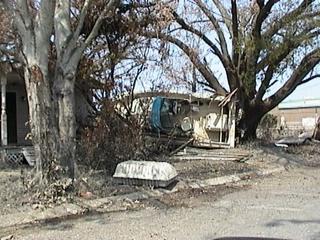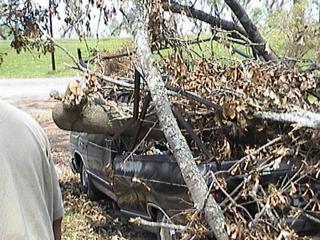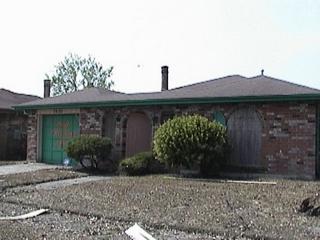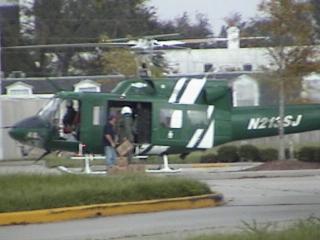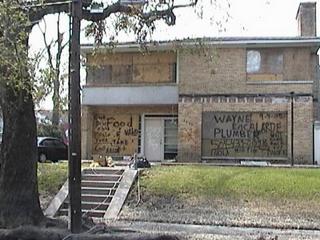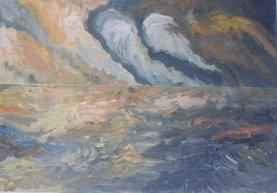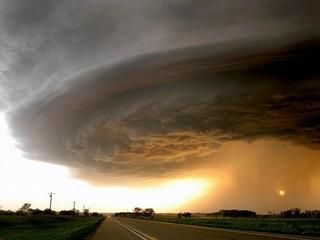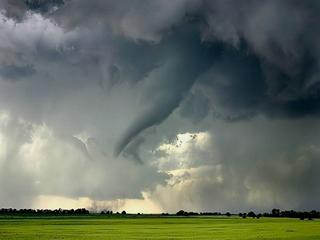Jordan's Log--Fighting for New Orleans
A month later, many of those dislocated and displaced from New Orleans are still trying to reunite with family members, still trying to find out information about their homes and belongings, still grieving over their losses. Parents are still trying to find a school district for their kids, and local schools are over full and some are not welcoming. One Louisiana school suspended all New Orleans students as punishment for the actions of one child.
For many who are still in the shelter system, abuse and revictimization is rampant. There have been widespread reports of racism and discrimination in Red Cross shelters, especially in Lafayette, Lake Charles and Baton Rouge. According to Jodie Escobedo, a doctor from California who was volunteering in the Baton Rouge shelters, “Local officials, including politicians, select Red Cross personnel and an especially well placed but small segment of the Louisiana medical community, have managed to get themselves into positions of power where their prejudices result in the hoarding of supplies, vilification of the needy and substandard treatment of volunteers and refugees alike.”
Escobedo paints a devastating portrait. “I witnessed Red Cross staff treated abusively by shelter administration who also expressed contempt for the sheltered population. Dental abscesses abounded and when several cases of small individual cases of Scope were donated, Red Cross staff was told not to distribute it because ‘they will drink it and get drunk.’ At the River Center the Red Cross hoarded hygiene supplies and basic necessities on a giant loading dock while kids could not go to school because they had no pants or shoes, babies drank from dirty baby bottles, people slept on the floor and donated clothes sat inaccessible. I tried for 4 days to get access to the Red Cross storehouse of hand sanitizer which was unfortunately off site.”
According to another volunteer in Baton Rouge, “The River Center had a special bathroom that was set up for elderly and handicapped residents. Those with special needs. The FEMA guys came in and made it a private bathroom for FEMA staff.”
Not only have many New Orleanians been mistreated in the shelter system, their voices are not heard. The same people of New Orleans residents who the national media portrayed as murders and animals are still silenced. Even in the progressive media, white voices like mine have been over represented instead of Black voices, and Black female voices are doubly missing. Beyond race, there are also other issues of privilege. As one community organizer expressed to me the other day, “there’s a difference between New Orleans residents and New Orleans natives. The voices I’ve heard speaking for us have been people who moved to New Orleans Many of them are currently staying with family or friends from somewhere else. They’re in a different situation. I’m from New Orleans. I don’t have anywhere else.”
They way the media covered the first few days still stings. This headline from today’s New Orleans Times-Picayune says it all: “Rumors of deaths greatly exaggerated - Widely reported attacks false or unsubstantiated.” The article goes on to state, “Four weeks after the storm, few of the widely reported atrocities have been backed with evidence. The piles of bodies never materialized, and soldiers, police officers and rescue personnel on the front lines say that although anarchy reigned at times and people suffered unimaginable indignities, most of the worst crimes reported at the time never happened.” The one national guard soldier who was shot turned out to have shot himself. Between the Convention Center and Superdome, there were ten bodies found. Despite the reports of mass killings, only one of the deaths appears to be a homicide. However, it was these rumors that were used to demonize the people of New Orleans, and since most of the media has offered no correction, the representation still stands.
Meanwhile, the bulldozer of the Disaster Industrial Complex continues to rush towards our city. For executives at Halliburton, there was no pause for grieving. For the white elites of New Orleans, the same unelected power structure that parades in all white Mardi Gras Krewes and lives in wealthy uptown mansions, there was no fear and insecurity. For all of those who are poised to gain from this horrible chain of events, there has been nothing but a rush to profit. The real criminals run free.
New Orleans’ progressive infrastructure is as weak and underfunded as the levees around the lower 9th ward. The grassroots organizations who are coming together to fight for the future of New Orleans are struggling to define their work and mission, while the diaspora of our city becomes ever more displaced.
There are so many difficulties that organizers face right now, from the stress and trauma of lost lives and livelihoods, to communications and housing issues. The cel phone network in Baton Rouge is so overloaded right now, its almost impossible to call from one local cel phone to another. Apartments are scarce, and some landlords are asking for six months rent in advance. New Orleans-based groups have no access to their office and files. It seems that every day I talk to another friend who has lost everything, or is trying to clean mold off of a few remaining possessions they’ve recovered. I still don’t know if all of my friends are alive, including one of my best friends and her family.
Still, the fight continues. The People’s Hurricane Relief Fund and Oversight Commission (PHRF), currently based in Jackson, Mississippi, is working to set up offices in other cities with evacuee populations. They have also formed committees and a structure for folks from New Orleans and for supporters from around the US to join, and they are convening a strategy retreat for this weekend, in South Carolina. “We’re buckling down for the long term,” organizer Curtis Muhammad told me. “This is a five year, a ten year struggle.”
PHRF has achieved an early prominence through its powerful and galvanizing first statement, issued just days after the world watched in horror as a city drowned under mismanagement and neglect. Since then, representatives from the group have been highlighted on independent media, and have met with Hugo Chavez and spoke at last weekend’s March on Washington.However, there are other efforts as well, with various levels of cooperation and communication. In Baton Rouge, at least two other coalitions focused on reconstruction have come together. One of the groups was initiated by the NAACP and the Service Employees International Union, and is planning demonstrations, as well as media and political campaigns. Their first two meetings featured a diversity of organizations and individuals, from shelter residents to folks from ACLU, ACORN, Juvenile Justice Project of Louisiana and Malcolm X Grassroots Movement. They are still grappling with everything from the group’s name and mission, to their demands.
Another group, the Rebuilding Louisiana Coalition, was initiated by progressive political campaigners from New Orleans, and appears to be focused more on political pressure. The conveners, Cheron Brylski and Russell Henderson, have worked with a wide array of progressive politicians from Louisiana.Still, most New Orleans residents do not know about these groups, and those of us who are in touch have been following their progress with hope and apprehension. As one shelter resident whispered to me during a recent coalition meeting, “I’m just worried that they’ve won already. The Krewe’s have won, and we’ll never see our city again.”
